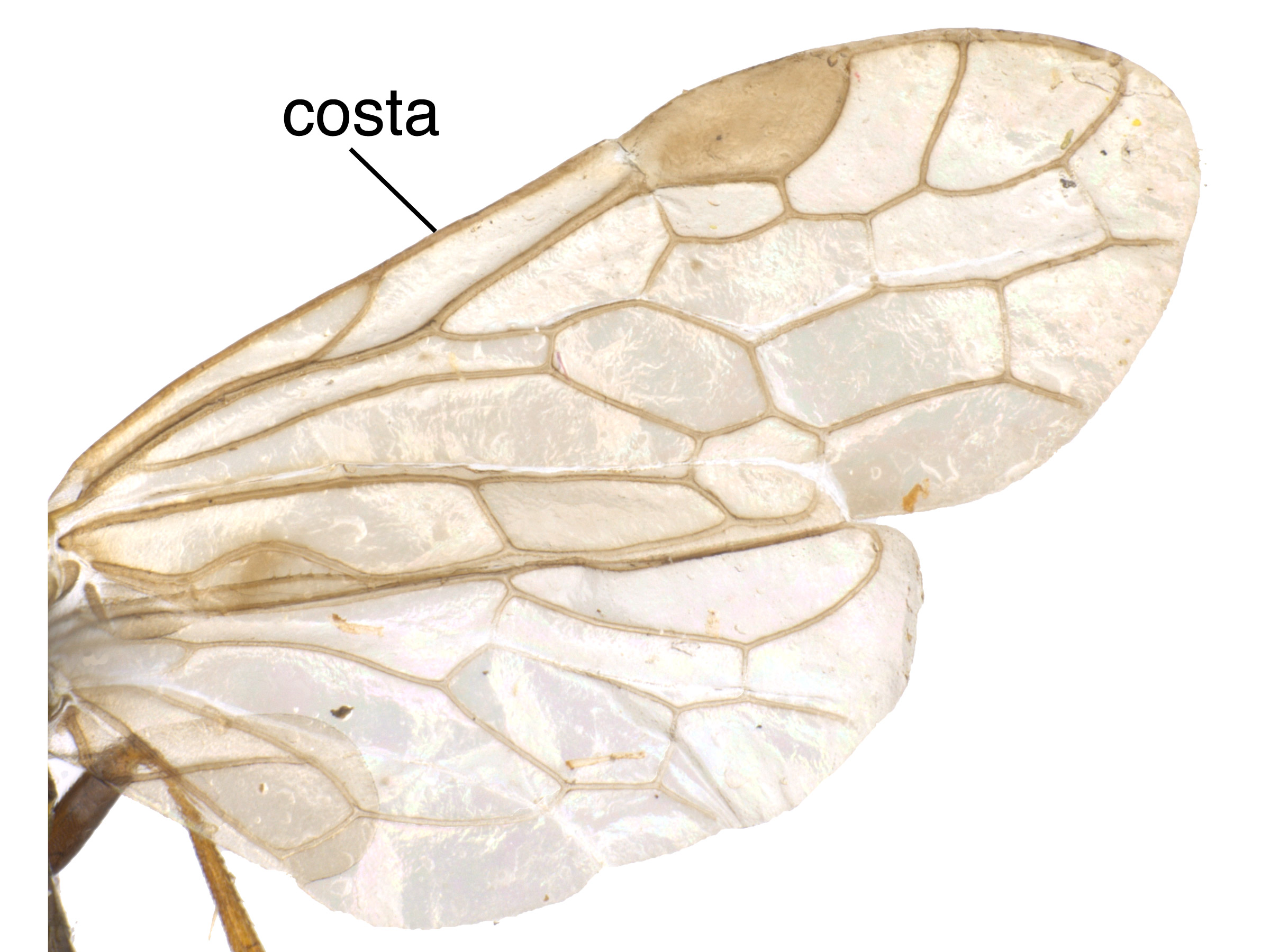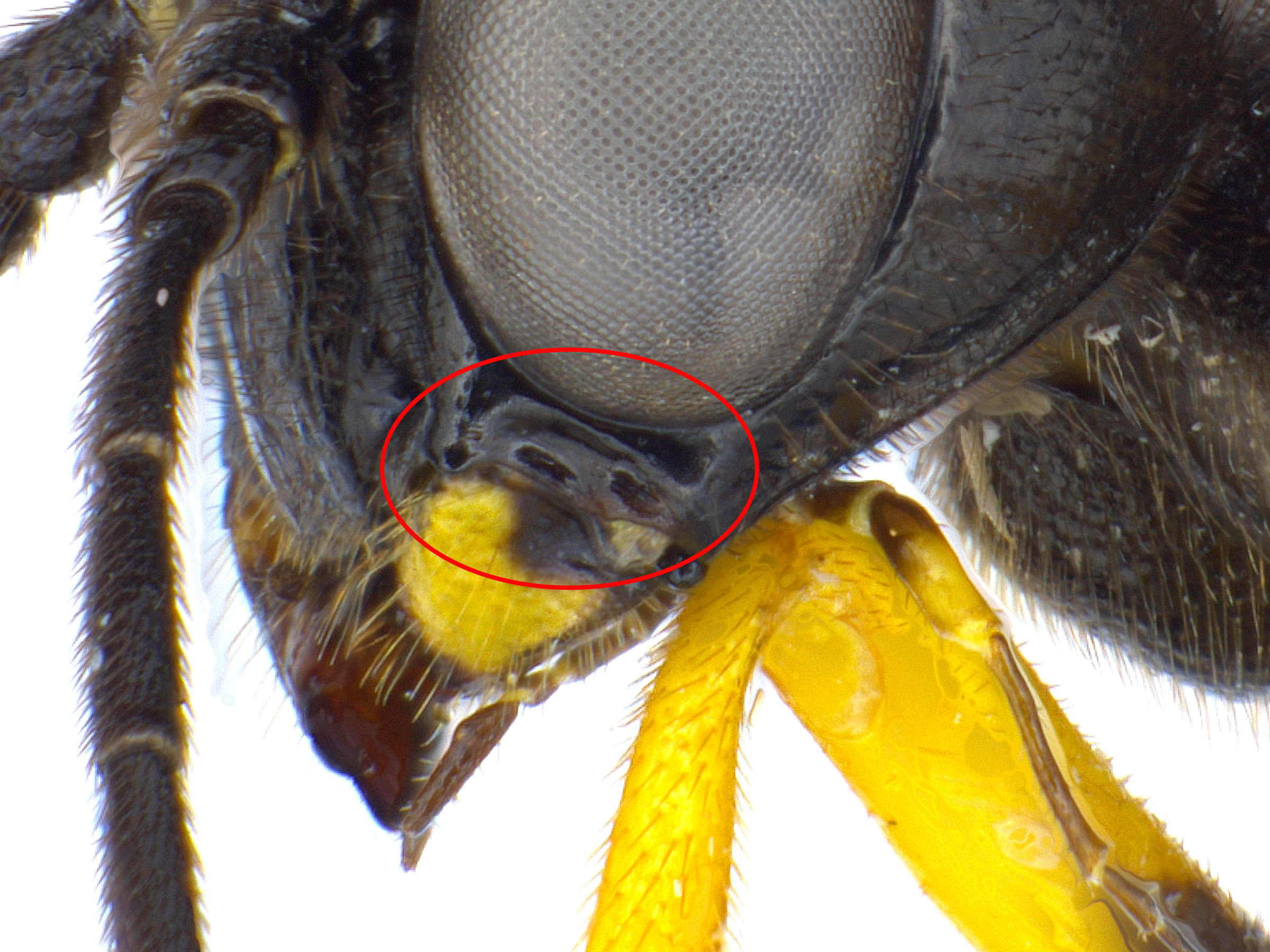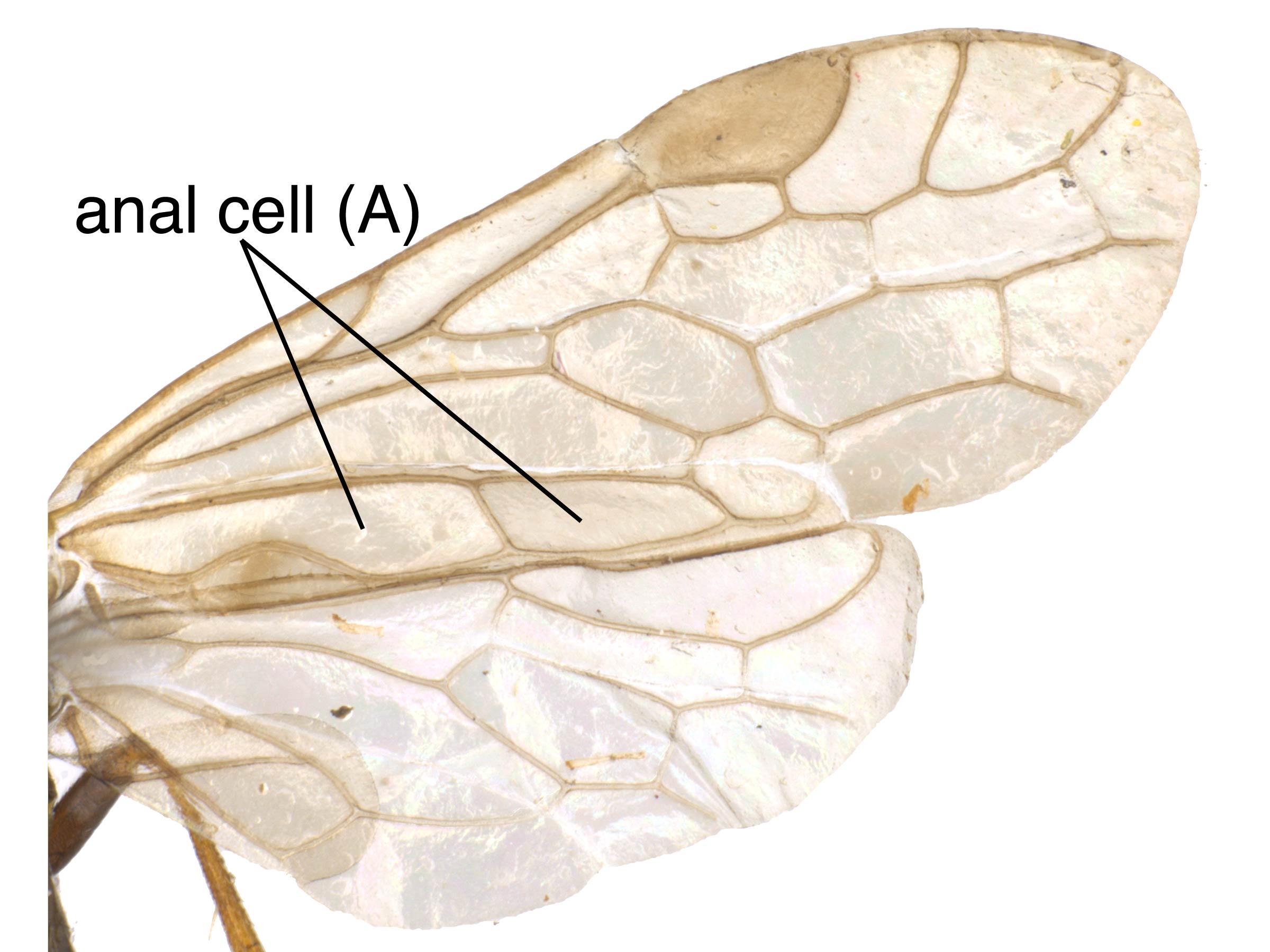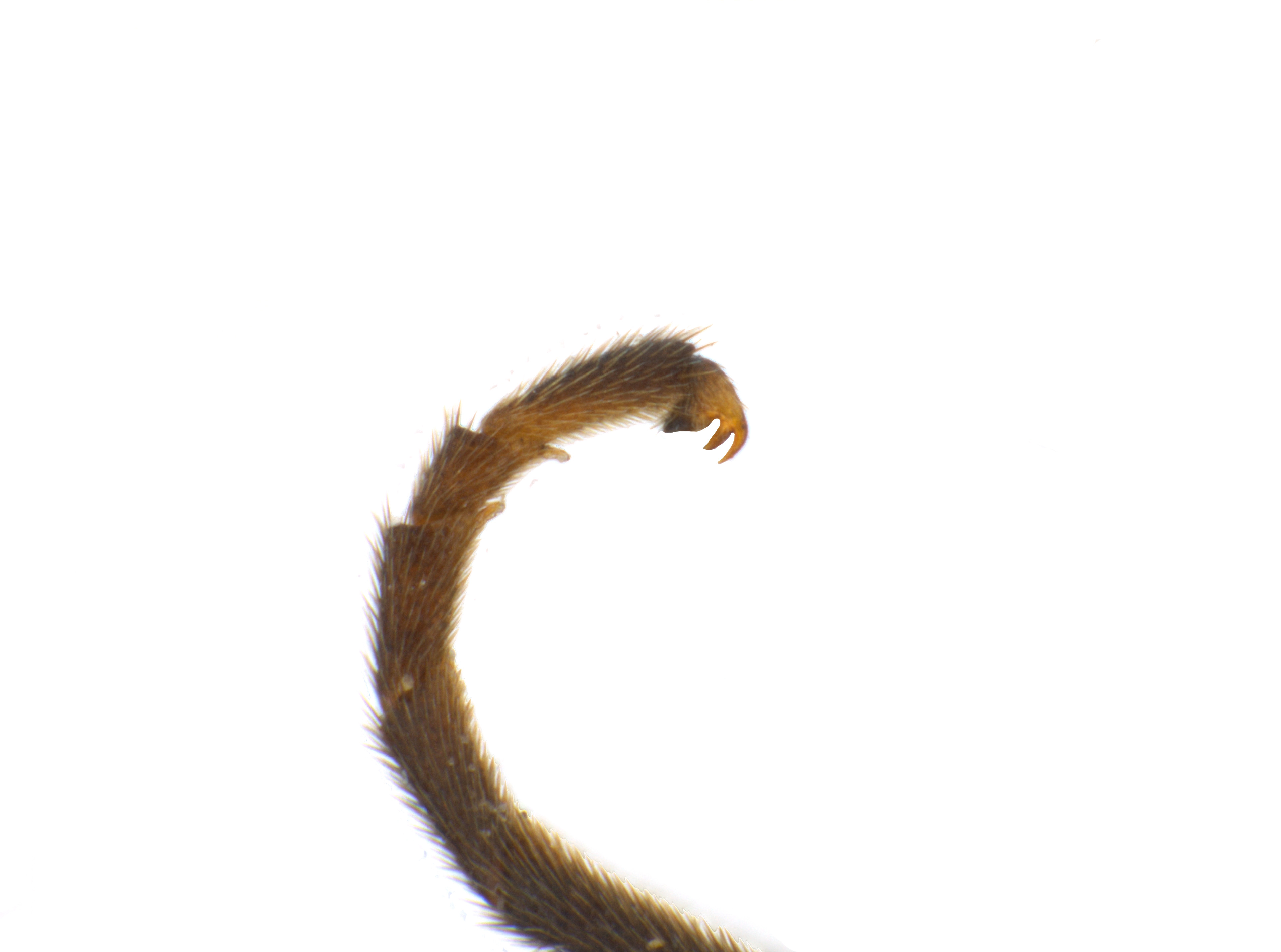Family: Tenthredinidae
Family common name: common sawflies
Subfamily: Heterarthrinae
Tribe: Heterarthrini
Genus: Heterarthrus Stephens, 1835
Subgenera: none
The Tenthredinidae are the most species-rich family and are found throughout the world, in all continents but Antarctica. They are known as the “common sawflies.” They can generally be recognized by a cylindrical body and long, segmented antennaeantenna:
the sensory organ emerging from the front of the head, usually between the compound eyes and above the clypeus; includes the flagellum, scape and pedicel
 . Otherwise, they come in a variety of colors, sizes, and forms (Goulet 1992Goulet 1992:
. Otherwise, they come in a variety of colors, sizes, and forms (Goulet 1992Goulet 1992:
Goulet H. 1992. The genera and subgenera of the sawflies of Canada and Alaska: Hymenoptera. Symphyta. The insects and arachnids of Canada. Part 20. Agriculture Canada Publication.).
Sawflies in the Heterarthrinae subfamily are generally small and dark-colored. Many species of this family are economic pests of trees and shrubs and can be characterized by their skeletonizing or leaf-mining larval feeding behaviors. Heterarthrinae adults can be distinguished from those of other subfamilies by wing venationvenation:
the network of veins on a wing
(Smith 1971aSmith 1971a:
Smith DR. 1971a. Nearctic Sawflies. III. Heterarthrinae: Adults and larvae (Hymenoptera: Tenthredinidae). Technical Bulletin, U.S. Department of Agriculture 1420: 1-84.).
Heterarthrus are small sawflies, about 4.5 mm in length, and mostly black with either yellow abdominal spots and a yellow costacosta:
the robust vein on the anterior margin of the wing; vein C
 , or with a partially reddish-brown abdomenabdomen:
, or with a partially reddish-brown abdomenabdomen:
the third and last segment of an insect's body; in sawflies this is usually made up of 11 segments (segments 9 and 10 often fused) (Smith 1971aSmith 1971a:
(Smith 1971aSmith 1971a:
Smith DR. 1971a. Nearctic Sawflies. III. Heterarthrinae: Adults and larvae (Hymenoptera: Tenthredinidae). Technical Bulletin, U.S. Department of Agriculture 1420: 1-84., Humble 2010Humble 2010:
Humble LM. 2010. First North American records for Heterarthrus vagans (Hymenoptera: Tenthredinidae), a Palearctic leafmining sawfly of alder. Canadian Entomologist 142: 181-187.).
There are 23 described extantextant:
in existence; opposite of extinct
species. Two species occur in North America (Taeger et al. 2018Taeger et al. 2018:
Taeger A, Liston AD, Prous M, Groll EK, Gehroldt T, and Blank SM. 2018. ECatSymmdash;Electronic World Catalog of Symphyta (Insecta, Hymenoptera). Program version 5.0 (19 Dec 2018), data version 40 (23 Sep 2018). Senckenberg Deutsches Entomologisches Institut (SDEI), Muuml;ncheberg. https://sdei.de/ecatsym/ Accessed: 28 Jan 2020.).
A key to birch-feeding Heterathrinae that includes both NearcticNearctic:
describing the region of the Northern Hemisphere that includes North America south through northern Mexico
 Heterarthrus species is included in Humble 2010Humble 2010:
Heterarthrus species is included in Humble 2010Humble 2010:
Humble LM. 2010. First North American records for Heterarthrus vagans (Hymenoptera: Tenthredinidae), a Palearctic leafmining sawfly of alder. Canadian Entomologist 142: 181-187..
Subfamily characters
 M slightly constricted at apexapex:
M slightly constricted at apexapex: vein 2r present (Goulet 1992Goulet 1992:
vein 2r present (Goulet 1992Goulet 1992:Genus characters
 length about as long as diameter of antennal socket (Goulet 1992Goulet 1992:
length about as long as diameter of antennal socket (Goulet 1992Goulet 1992: veins 2A and 3A complete; complete anal cellanal cell:
veins 2A and 3A complete; complete anal cellanal cell: present (Goulet 1992Goulet 1992:
present (Goulet 1992Goulet 1992: anal cellanal cell:
anal cellanal cell: with an angled crossveincrossvein:
with an angled crossveincrossvein: vein M straight, not curved near intersection with M+Cu (Goulet 1992Goulet 1992:
vein M straight, not curved near intersection with M+Cu (Goulet 1992Goulet 1992: with large basalbasal:
with large basalbasal: bifidbifid:
bifidbifid: ; teeth of claw about equal in length (Smith 1971aSmith 1971a:
; teeth of claw about equal in length (Smith 1971aSmith 1971a:Heterarthrus can be easily distinguished from other genera in the subfamily by the complete anal cellanal cell:
cell A of either the fore wing or hind wing
 with crossveincrossvein:
with crossveincrossvein:
short section of wing vein that connects two larger veins
, number of antennal segments, and relatively large malar spacemalar space:
the minimum distance between the base of the mandible and the ventral margin of the compound eye
 (Smith 1971aSmith 1971a:
(Smith 1971aSmith 1971a:
Smith DR. 1971a. Nearctic Sawflies. III. Heterarthrinae: Adults and larvae (Hymenoptera: Tenthredinidae). Technical Bulletin, U.S. Department of Agriculture 1420: 1-84.).
Heterarthrus ochropoda has been determined to be a pest of Populus tremula (European aspen) and Populus nigra (black poplar) in Turkey, with recorded levels of foliar damage as high as 70% in some locations (Çalmaşur and Özbek 2004). Several species of Heterathrus in Central Europe feed on species of Acer (maple) (Altenhofer and Zombori 1987Altenhofer and Zombori 1987:
Altenhofer E and Zombori L. 1987. The species of Heterarthrus Stephens, 1835 feeding on maple (Hymenoptera: Tenthredinidae). Annales Historico-Naturales Musei Nationalis Hungarici 79: 185-197.), and in Japan feed on Salix (willow) (Smith and Naito 2005Smith and Naito 2005:
Smith DR and Naito T. 2005. A new species of Heterarthrus Stephens (Hymenoptera, Tenthredinidae) leafmining Salix spp. in Japan. Japanese Journal of Systematic Entomology 11 (2): 189-193.).
Heterarthrus nemoratus, the late birch leaf edgeminer, can occur in large populations, leading to extensive foliar damage (Digweed et al. 2009Digweed et al. 2009:
Digweed SC, MacQuarrie CJK, Langor DW, Williams DJM, Spence JR, Nystrom KL and Morneau L. 2009. Current status of invasive alien birch-leafmining sawflies (Hymenoptera: Tenthredinidae) in Canada, with keys to species. Canadian Entomologist 141: 201-235.). Heterarthrus vagans can be a pest of red alder pest (Humble 2010Humble 2010:
Humble LM. 2010. First North American records for Heterarthrus vagans (Hymenoptera: Tenthredinidae), a Palearctic leafmining sawfly of alder. Canadian Entomologist 142: 181-187.).
Heterarthrus nemoratus feeds on species of Betula (birch), including B. alleghaniensis (yellow birch), B. glandulosa (resin birch), B. lenta (sweet birch), B. nigra (river birch), B. occidentalis (water birch), B. papyrifera (paper birch), B. populifolia (gray birch), and B. pumila (bog birch). There are also records of H. nemoratus completing larval development on Alnus viridis (green alder) (Goulet 1992Goulet 1992:
Goulet H. 1992. The genera and subgenera of the sawflies of Canada and Alaska: Hymenoptera. Symphyta. The insects and arachnids of Canada. Part 20. Agriculture Canada Publication., Digweed et al. 2009Digweed et al. 2009:
Digweed SC, MacQuarrie CJK, Langor DW, Williams DJM, Spence JR, Nystrom KL and Morneau L. 2009. Current status of invasive alien birch-leafmining sawflies (Hymenoptera: Tenthredinidae) in Canada, with keys to species. Canadian Entomologist 141: 201-235.). Heterarthrus vagans feeds on Alnus rubra (red alder) (Humble 2010Humble 2010:
Humble LM. 2010. First North American records for Heterarthrus vagans (Hymenoptera: Tenthredinidae), a Palearctic leafmining sawfly of alder. Canadian Entomologist 142: 181-187.).
Females oviposit into the margin of the leaf. The hatched larvaelarva:
the immature stage of holometabolous insects
 feed inside the leaf on the parenchymaparenchyma:
feed inside the leaf on the parenchymaparenchyma:
in plants, the soft, thin-walled, inner tissue that performs functions such as photosynthesis, storage, and secretion; as opposed to dermal and vascular tissues
as leaf miners, creating blotch mines. The feeding stage lasts about 30 days. Unlike leaf miners of the Fenusini tribe, which drop to the soil, mature Heterarthrus larvaelarva:
the immature stage of holometabolous insects
 remain in the leaf and build a papery cocoon in which they overwinter and subsequently pupate (Smith 1971aSmith 1971a:
remain in the leaf and build a papery cocoon in which they overwinter and subsequently pupate (Smith 1971aSmith 1971a:
Smith DR. 1971a. Nearctic Sawflies. III. Heterarthrinae: Adults and larvae (Hymenoptera: Tenthredinidae). Technical Bulletin, U.S. Department of Agriculture 1420: 1-84., Digweed et al. 2009Digweed et al. 2009:
Digweed SC, MacQuarrie CJK, Langor DW, Williams DJM, Spence JR, Nystrom KL and Morneau L. 2009. Current status of invasive alien birch-leafmining sawflies (Hymenoptera: Tenthredinidae) in Canada, with keys to species. Canadian Entomologist 141: 201-235.). Heterarthrus nemoratus is univoltineunivoltine:
describing an insect with a life cycle of one generation per year
, and males are not known (Smith 1971aSmith 1971a:
Smith DR. 1971a. Nearctic Sawflies. III. Heterarthrinae: Adults and larvae (Hymenoptera: Tenthredinidae). Technical Bulletin, U.S. Department of Agriculture 1420: 1-84., Digweed et al. 2009Digweed et al. 2009:
Digweed SC, MacQuarrie CJK, Langor DW, Williams DJM, Spence JR, Nystrom KL and Morneau L. 2009. Current status of invasive alien birch-leafmining sawflies (Hymenoptera: Tenthredinidae) in Canada, with keys to species. Canadian Entomologist 141: 201-235.). Heterarthrus vagans is bivoltinebivoltine:
describing a life cycle with two generations per calendar year
(Humble 2010Humble 2010:
Humble LM. 2010. First North American records for Heterarthrus vagans (Hymenoptera: Tenthredinidae), a Palearctic leafmining sawfly of alder. Canadian Entomologist 142: 181-187.).
World: This genus is represented in North America, Europe east through Siberia, Asia through China, Japan, India, and Myanmar (Smith and Naito 2005Smith and Naito 2005:
Smith DR and Naito T. 2005. A new species of Heterarthrus Stephens (Hymenoptera, Tenthredinidae) leafmining Salix spp. in Japan. Japanese Journal of Systematic Entomology 11 (2): 189-193., Humble 2010Humble 2010:
Humble LM. 2010. First North American records for Heterarthrus vagans (Hymenoptera: Tenthredinidae), a Palearctic leafmining sawfly of alder. Canadian Entomologist 142: 181-187., Taeger et al. 2018Taeger et al. 2018:
Taeger A, Liston AD, Prous M, Groll EK, Gehroldt T, and Blank SM. 2018. ECatSymmdash;Electronic World Catalog of Symphyta (Insecta, Hymenoptera). Program version 5.0 (19 Dec 2018), data version 40 (23 Sep 2018). Senckenberg Deutsches Entomologisches Institut (SDEI), Muuml;ncheberg. https://sdei.de/ecatsym/ Accessed: 28 Jan 2020.).
North America: Both species of North American Heterarthrus are introduced from Europe. Heterarthrus nemoratus was first discovered in Nova Scotia in 1908. It is now widespread in the northeastern United States and southeastern Canada, and is present in Alberta, British Columbia, Washington, Northwest Territories, and Alaska (Smith 1971aSmith 1971a:
Smith DR. 1971a. Nearctic Sawflies. III. Heterarthrinae: Adults and larvae (Hymenoptera: Tenthredinidae). Technical Bulletin, U.S. Department of Agriculture 1420: 1-84., Snyder et al. 2007Snyder et al. 2007:
Snyder C, MacQuarrie CJ, Zogas K, Kruse JJ, and Hard J. 2007. Invasive species in the last frontier: distribution and phenology of birch leaf mining sawflies in Alaska. Journal of Forestry 105(3): 113-119., Digweed et al. 2009Digweed et al. 2009:
Digweed SC, MacQuarrie CJK, Langor DW, Williams DJM, Spence JR, Nystrom KL and Morneau L. 2009. Current status of invasive alien birch-leafmining sawflies (Hymenoptera: Tenthredinidae) in Canada, with keys to species. Canadian Entomologist 141: 201-235., Looney et al. 2016Looney et al. 2016:
Looney C, Smith DR, Collman SJ, Langor DW, and Peterson MA. 2016. Sawflies (Hymenoptera, Symphyta) newly recorded from Washington State. Journal of Hymenoptera Research 49: 129-159. https://doi.org/10.3897/JHR.49.7104). Heterathrus vagans was first discovered in British Columbia in 2009 and is now recorded in Washington State as well (Humble 2010Humble 2010:
Humble LM. 2010. First North American records for Heterarthrus vagans (Hymenoptera: Tenthredinidae), a Palearctic leafmining sawfly of alder. Canadian Entomologist 142: 181-187., Looney et al. 2016Looney et al. 2016:
Looney C, Smith DR, Collman SJ, Langor DW, and Peterson MA. 2016. Sawflies (Hymenoptera, Symphyta) newly recorded from Washington State. Journal of Hymenoptera Research 49: 129-159. https://doi.org/10.3897/JHR.49.7104).
Map data from: GBIF.org (29 October 2019) GBIF Occurrence Download Heterarthrus
Details about data used for maps can be found here.